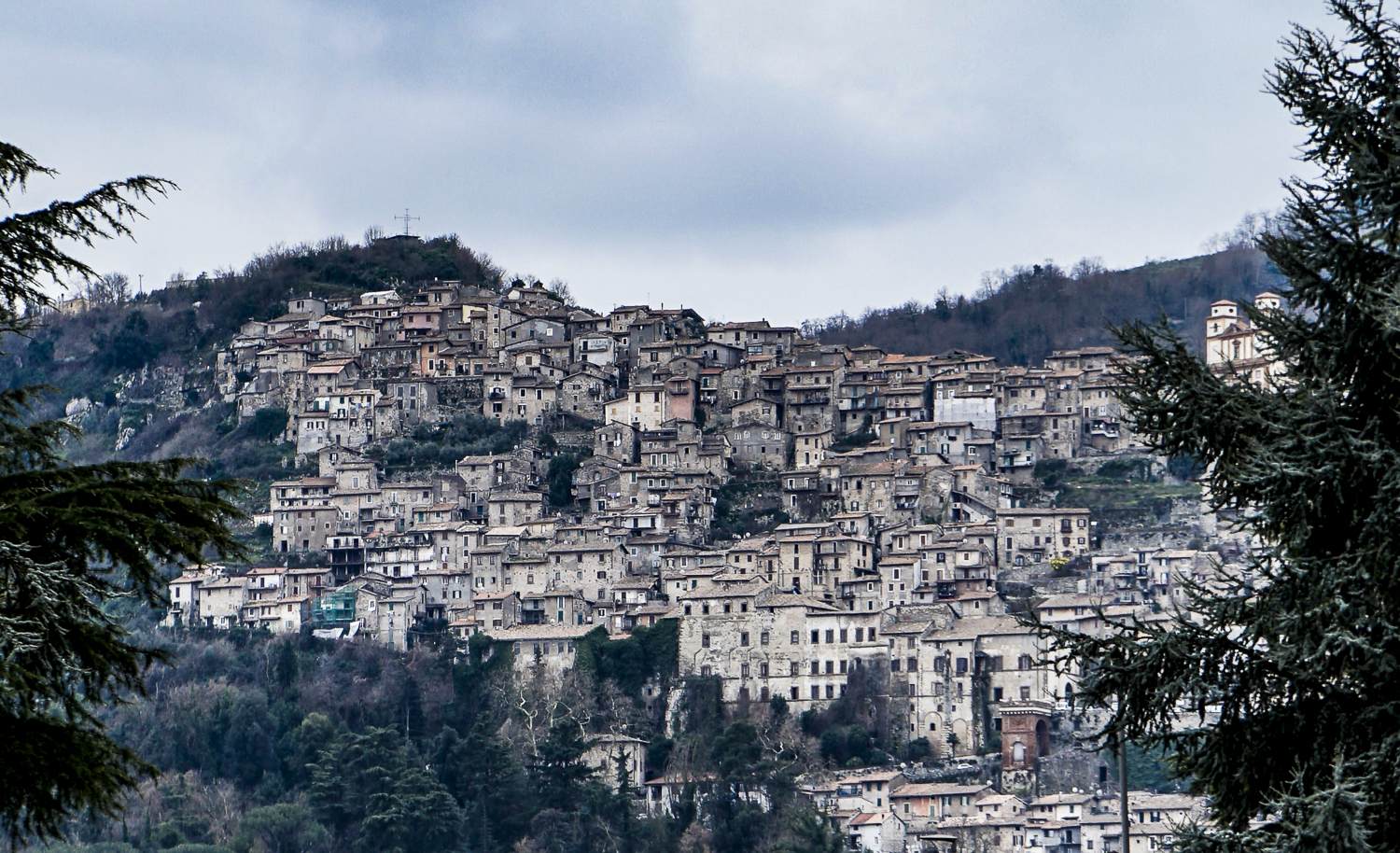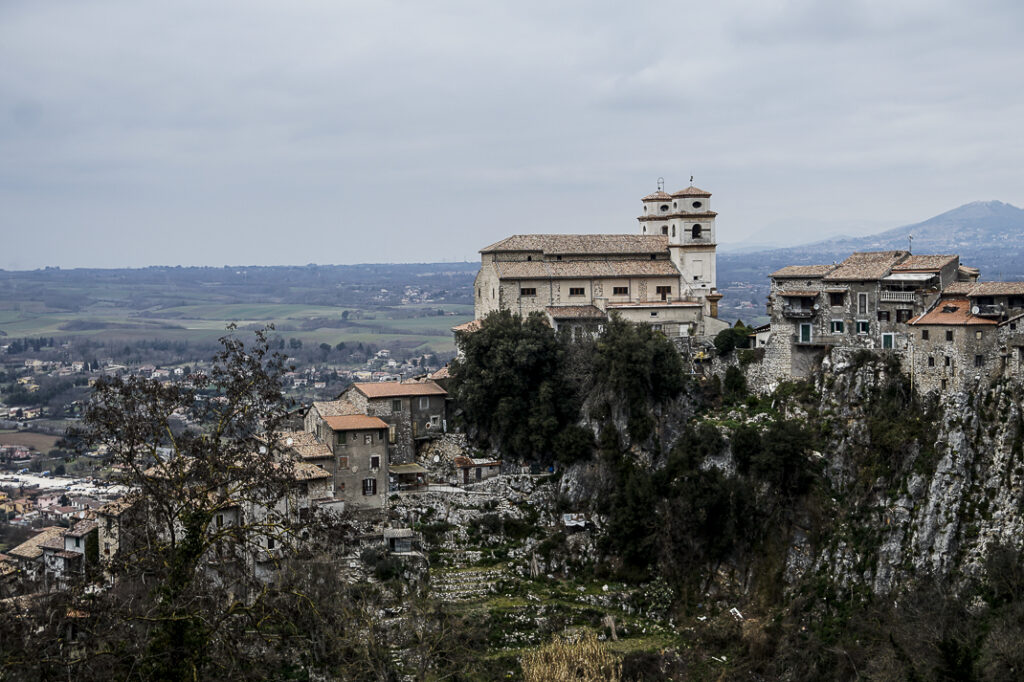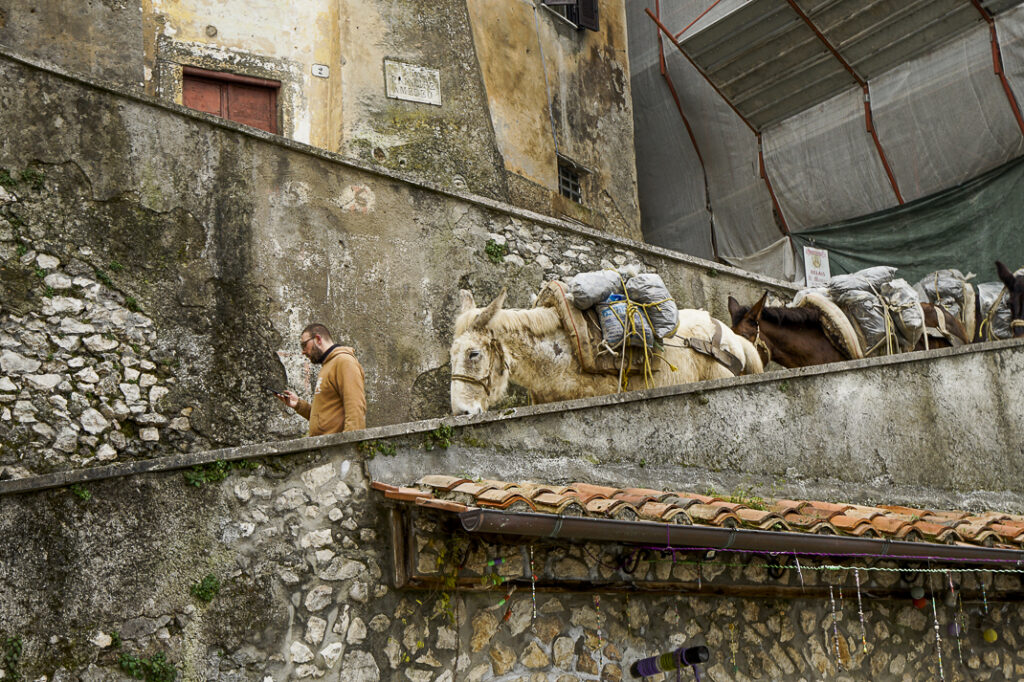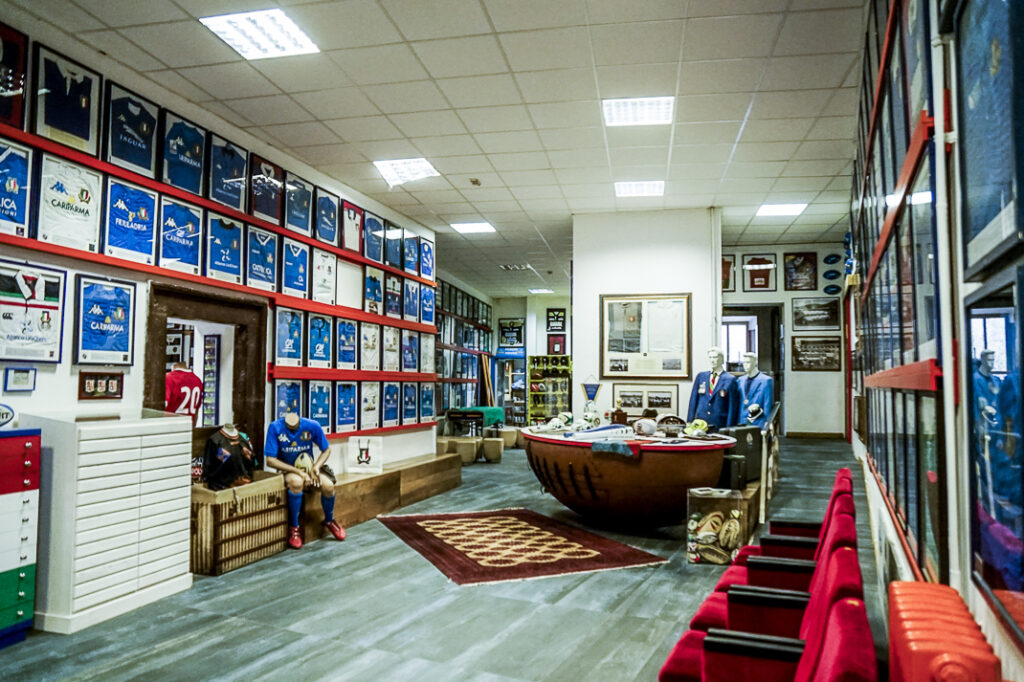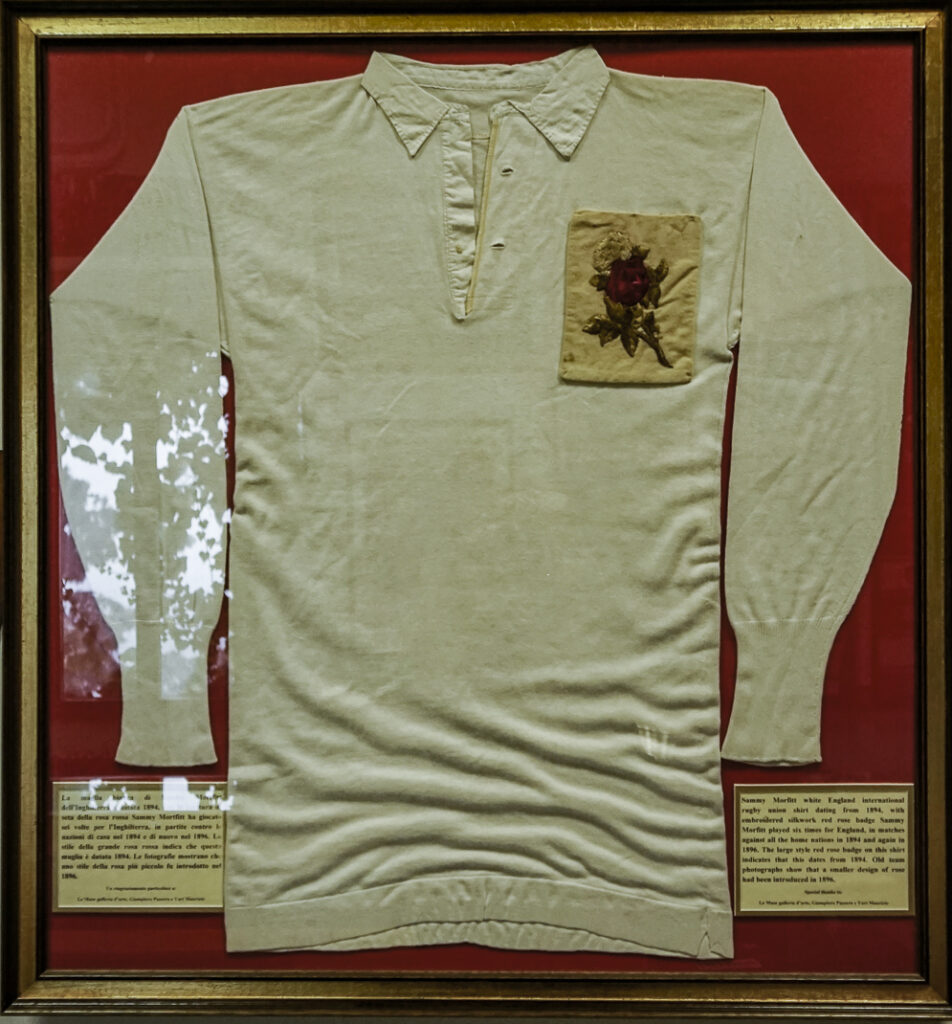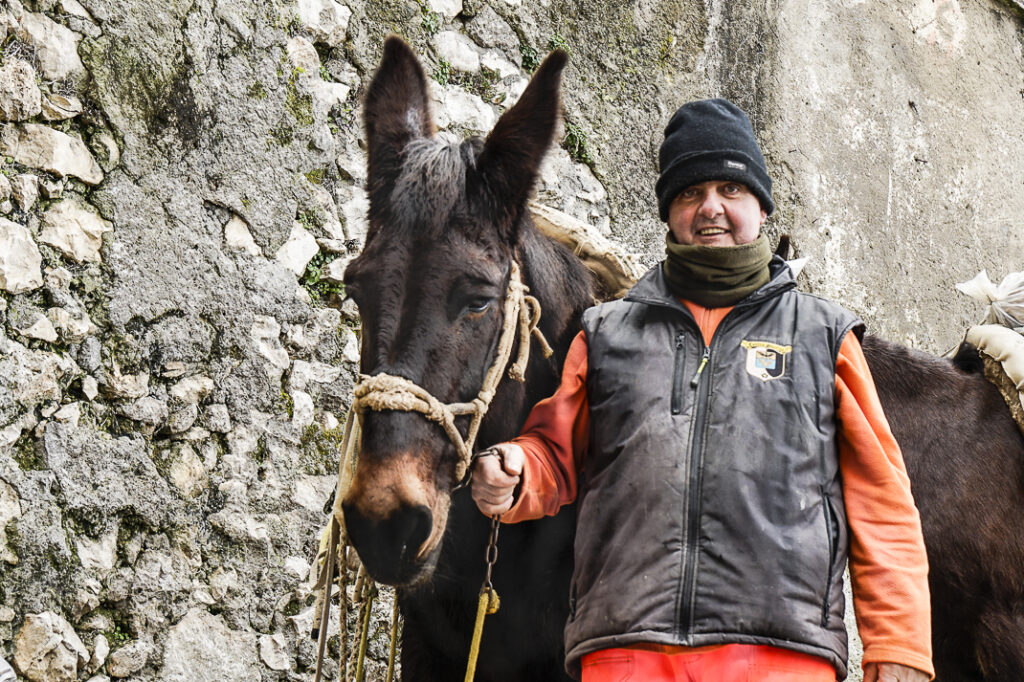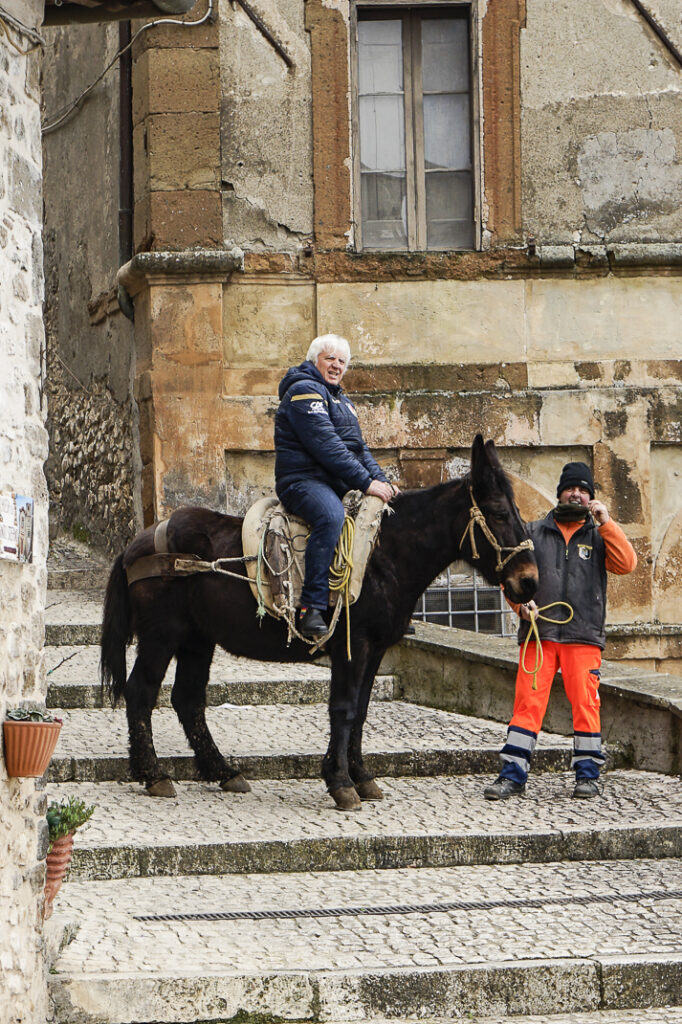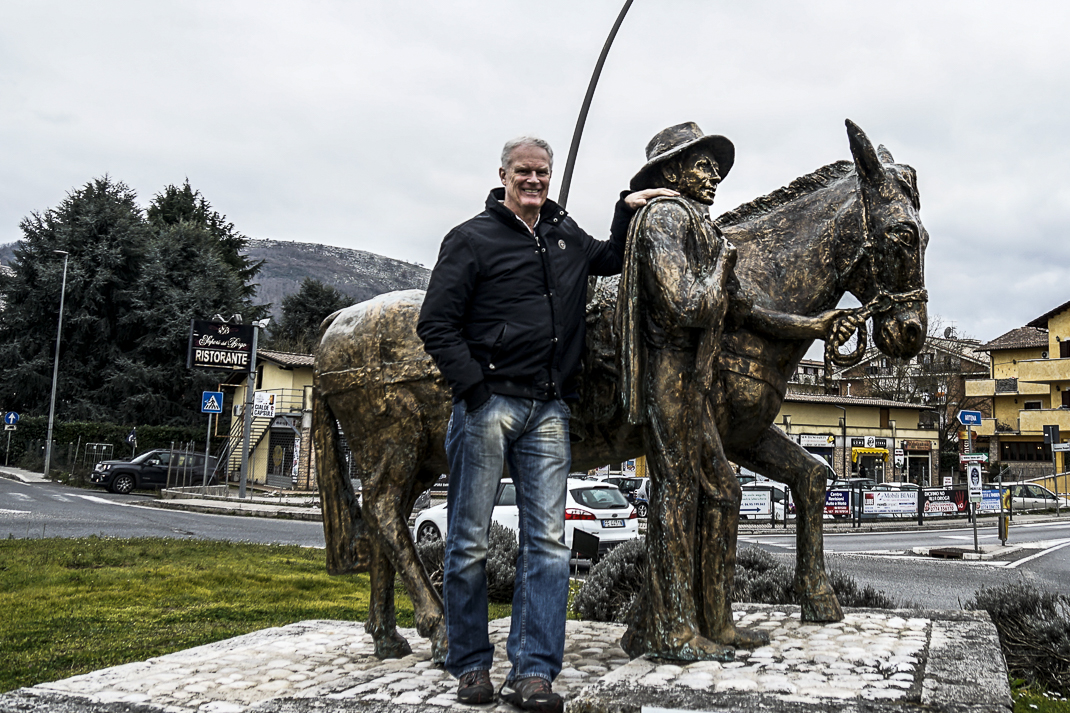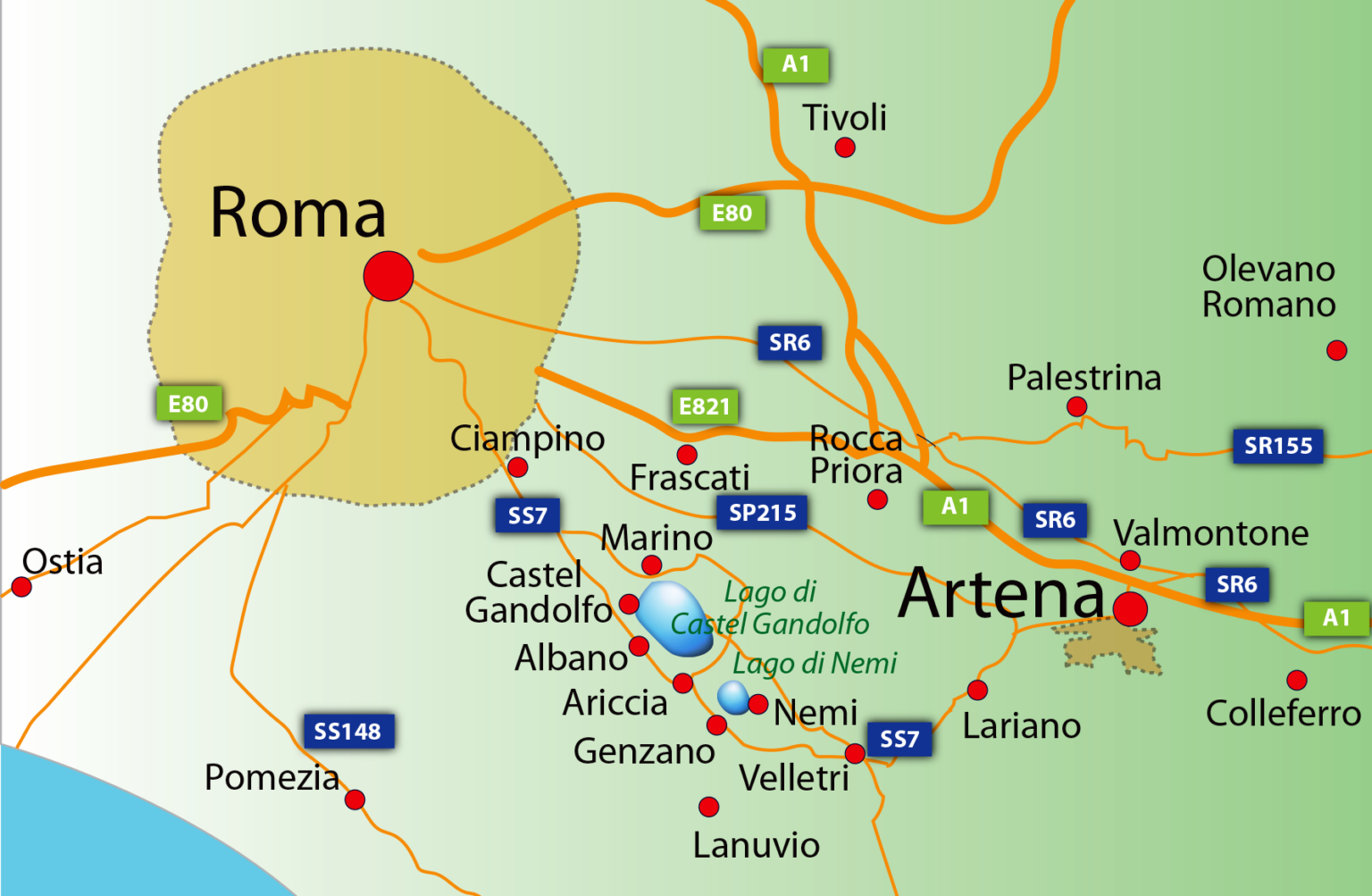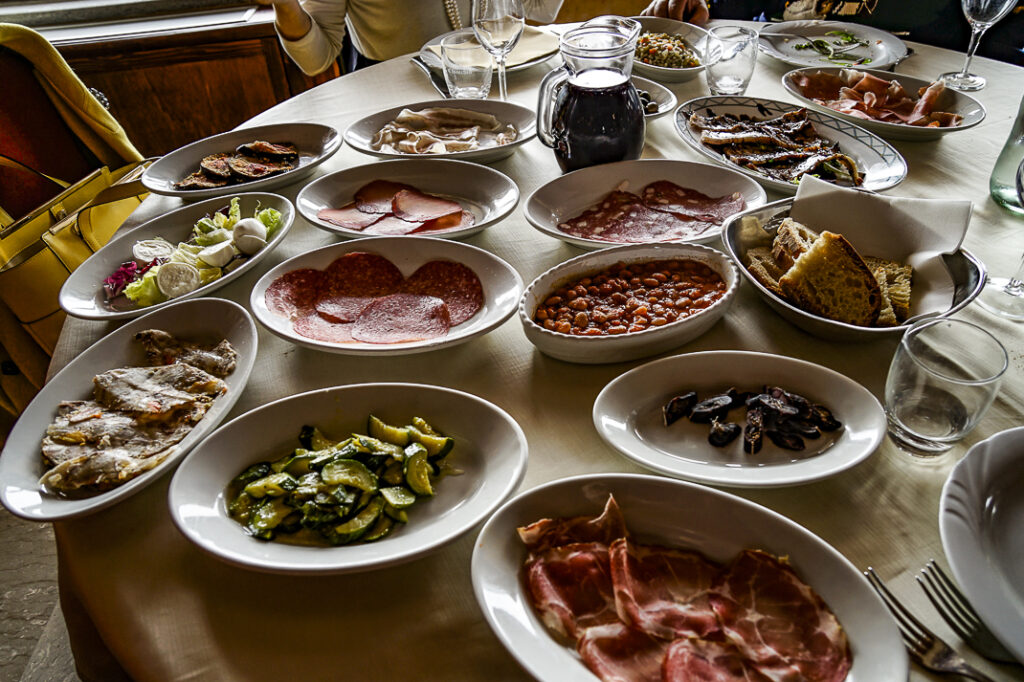

Artena: Kickin’ it with mules and rugby
The old town of Artena rises high like a stone fortress in the foothills of the Lepini Mountains. From the modern town below, the roads above are so narrow they are not visible to the naked eye. But park in Piazza della Vittoria at the base of its Centro Storico, with the stupendous lookout over the Lazio valley, and zigzag up the windy, stone sidewalks.
Be sure to make way for the half dozen mules used to haul garbage and supplies up and down the town. Artena is 30 miles (52 kilometers) southeast of Rome and has two unique features, neither of which is related. It does use mules on roads too narrow and steep for cars. And it has the world’s best rugby museum.
The town of 14.000 is made up of two parts: One, the plain village at the bottom, featuring a bronze statue of a mule carrying supplies; two, the old town 150 meters higher at 420-meter elevation. Artena was once the pride and joy of the famed Borgheses, the family of Italian noblemen. They built Artena’s Borghese Palace, which houses the Rugby Museum, and the Granaio Borghese which is now an archaeological museum.
However, the Borgheses fought the papacy for control of Rome and papal armies destroyed Artena in 1526, 1543 and 1557. It has recovered nicely and looks like it hasn’t changed in more than 1,000 years.
Things to do
Rugby Museum: You don’t have to like rugby to love this museum. It’s about culture and nationalism and friendship and glory. I was a sportswriter for 40 years in the U.S. and have been to sports museums all over the world. This is the best I’ve ever seen. And I don’t even like rugby. This space is not big enough to list all the remarkable memorabilia. Perhaps the entire Internet isn’t. It has the world’s oldest rugby jersey: England’s national shirt from 1894. It has a signed jersey of New Zealand’s famed Richie McCaw, a three-time World Rugby player of the year and the only two-time captain of a World Cup champion from 2011 and 2015. It has home and away jerseys from the 1990 Soviet Union team on blankets from just after World War I emblazoned with Vladimir Lenin’s face. It has jerseys from the Tahitian national team – which played only one game in its history. It has a jersey from the French club, Stade Francais, emblazoned with pink orchids from 2006. It has entire rooms and walls dedicated to major rugby nations such as New Zealand, South Africa, England, France, Scotland, Wales and Ireland. The museum is the brainchild of Corrado Mattoccia, a former top-level Italian club rugby player who was friends with two stars of the Italian national team, Mauro and Mirco Bergamasco. They signed a couple of their jerseys for him and his collection began. That was 11 years ago and he now has 15,000 items, including 2,900 jerseys. Teams visiting Rome to play Italy contribute items and the last two World Cups invited him to bring memoribilia to put on display. He’ll go to the World Cup in France next fall as well. Asked what his favorite piece in his collection is, Corrado said, “The next one.”
Info: Via del Municipio 7, 39-348-374-1683, http://www.ilmuseodelrugby.it/, https://www.facebook.com/ilmuseodelrugby. Free. Call Corrado and tell him when you will arrive at Valmontone and he’ll pick you up at the train station. He also serves meals for the price of a donation of your choosing.
Archaeological Museum: In the 18th century, the Borgheses built a huge structure in the middle of the city for area farmers to store their grain. It served this function until the 1950s when, after a long period of dilapidation, a five-year reconstruction turned it into an archaeological museum. It features a lava stone ax dating to the Neolithic Age from 4300 BC-2000 BC and artifacts from Artena’s original settlement. It also has terracottas, weapons and elaborately decorated pottery from the middle Roman Republic period (509 B.C.-27 B.C.). It has material found in a preserved Roman Villa from the 1st century B.C. when the village had been abandoned for two centuries.
Info: Via Cristofo Colombo 2-11, 39-06-9519-1040, https://www-comune-artena-rm-it.translate.goog/zf/index.php/musei-monumenti/index/dettaglio-museo/museo/1?_x_tr_sch=http&_x_tr_sl=it&_x_tr_tl=en&_x_tr_hl=en&_x_tr_pto=sc, culture@comune.artena.rm.it, free, 9 a.m.-1 p.m., 3-7 p.m.
Church of the Holy Cross: Built in 1100 by another Borghese, this one Prince Giovanni Battista Borghese, it is Artena’s biggest landmark. Its two square bell towers with the octagonal pavilion stand out from the steep blanket of stone buildings. Its Baroque style and gold trim make it shine in a background of gray. It’s worth a look inside.
Info: Via Maggiore 8, 39-06-951-7305, https://www.santostefanoesantacroce.it/.
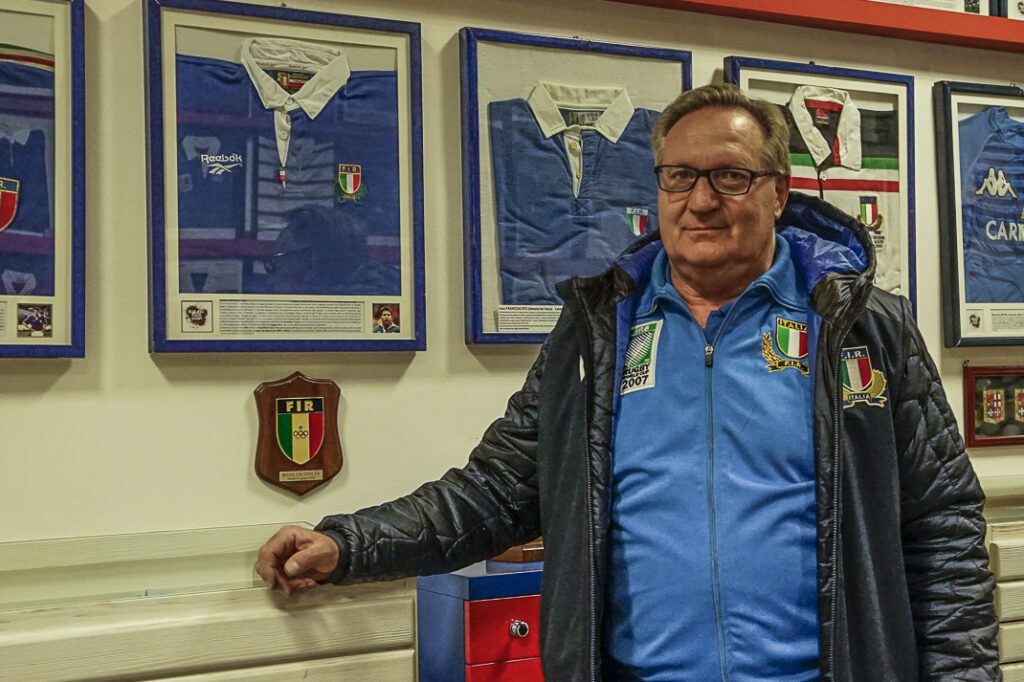
Artena’s mules
I’ve often said Rome is the filthiest capital in Europe. Maybe it should take a hint from Artena. Use mules. Yes, this little town on a cliff uses five mules to collect garbage and haul it away. The Bucci family have been muleteers for generations. Today Emilio and his son Francesco take care and feed their mules in a big field atop the town. Every day they lead them on their rounds of about a kilometer and a half past 800 households, picking up garbage for recycling or hauling building materials. It makes sense. Artena’s windy alleys aren’t big enough for a car, let alone a garbage truck. Each mule can carry 150 kilograms at a time. When we arrived in Piaza della Vittoria, an ambulance crew was hauling a middle-aged man into their ambulance. He had injured his foot and couldn’t negotiate the steep paths. “A mule brought him down,” Emilio said. Soon, four mules were led down to the piazza, all carrying bags of stones for construction. The mules are huge. They look as big as Clydesdales. I tried sitting on one and couldn’t stretch my legs wide enough to cross its back. Emilio smiled. He laughed. These mules are like his pets. Their names are Mora, Maria, Pastera, Gioa and Mela.
How to get there:
Trains leave every 30-60 minutes from Rome for Valmontone.
The 45-minute trip is €3 one way. The three-mile taxi ride from Valmontone
to Artena is €9-€12.
Or if you’re visiting the Rugby Museum, call director Corrado Mattoccia at 39-348-374-1683 and he’ll pick you up.
Where to eat:
Chiocchio’, Via Santa Maria 40, 39-06-951-7096, http://www.ristorantechiocchio.eu/chio/, info@ristorantechiocchio.eu.
A modern, sprawling restaurant at the top of the town with a spectacular panoramic view of the valley below, the 50-year-old restaurant specializes in meat and fish. Get the mixed antipasti with everything from baccala’ to bruschetta to bufala mozzarella. My veal-filled ravioli in truffle sauce was exquisite. Lunch for four of us came out to only €30 each.
For more information:
Ufficio Turistica Artena,
Via del Municipio 7, 39-06-951-91020

